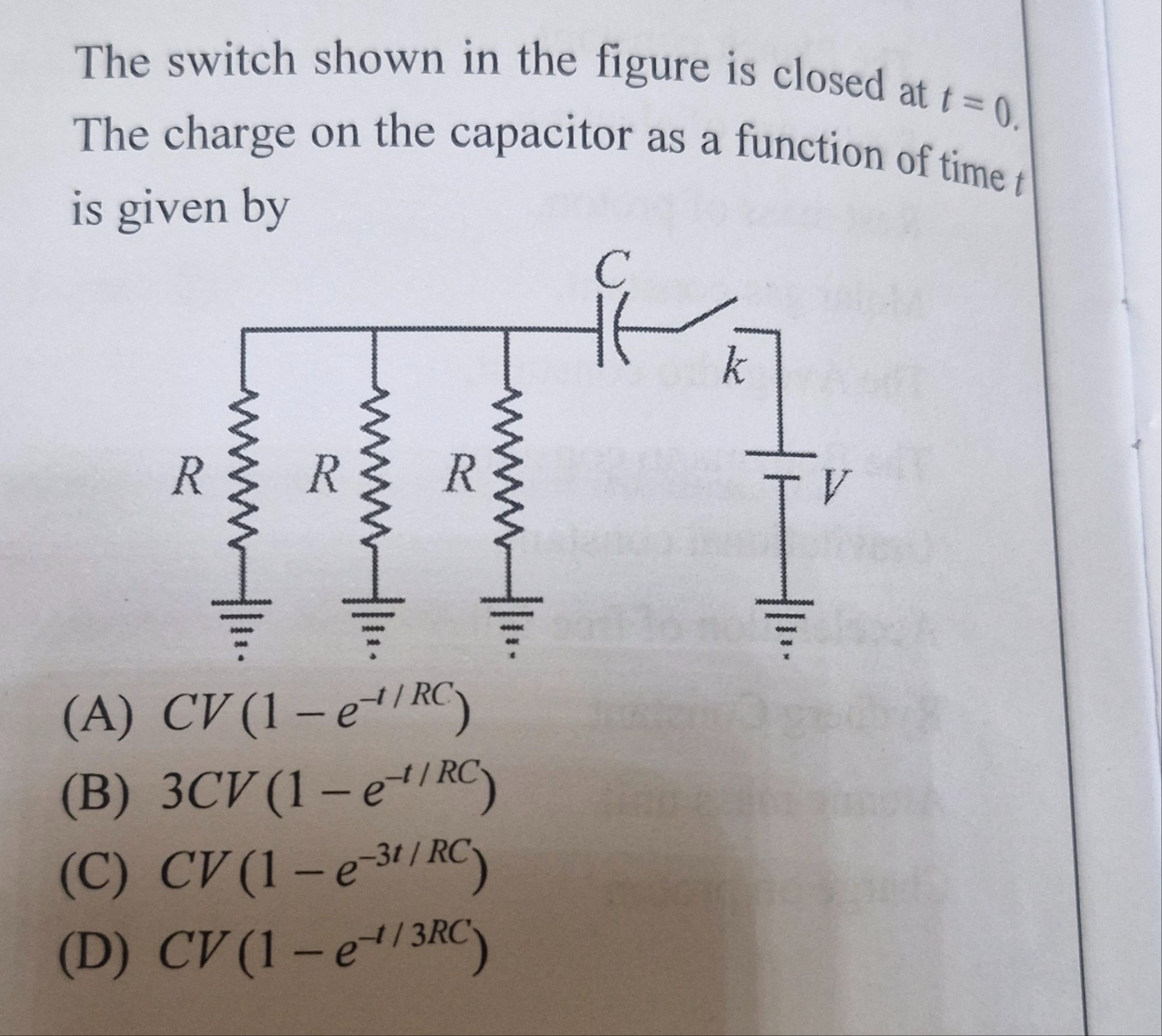Question
Question: The switch shown in the figure is closed at $t=0$. The charge on the capacitor as a function of time...
The switch shown in the figure is closed at t=0. The charge on the capacitor as a function of time t is given by

CV(1-e^{-t/RC})
3CV(1-e^{-t/RC})
CV(1-e^{-3t/RC})
CV(1-e^{-t/3RC})
CV(1-e^{-3t/RC})
Solution
The circuit consists of a voltage source V connected in series with a switch k, a capacitor C, and a parallel combination of three resistors, each with resistance R. When the switch is closed at t=0, the circuit becomes a series RC circuit.
-
Calculate the equivalent resistance: The three resistors R are connected in parallel. The equivalent resistance Req is given by: Req1=R1+R1+R1=R3 Req=3R
-
Determine the time constant: The time constant τ of an RC circuit is the product of the equivalent resistance and the capacitance: τ=ReqC=(3R)C=3RC
-
Determine the maximum charge: The maximum charge Qmax on the capacitor when it is fully charged is given by Qmax=CVsource, where Vsource is the voltage of the source. In this case, Vsource=V. Qmax=CV
-
Write the equation for charge as a function of time: For a capacitor charging in a series RC circuit, the charge q(t) as a function of time is given by: q(t)=Qmax(1−e−t/τ) Substituting the values of Qmax and τ: q(t)=CV(1−e−t/(RC/3)) q(t)=CV(1−e−3t/RC)
Comparing this result with the given options, we find that it matches option (C).
